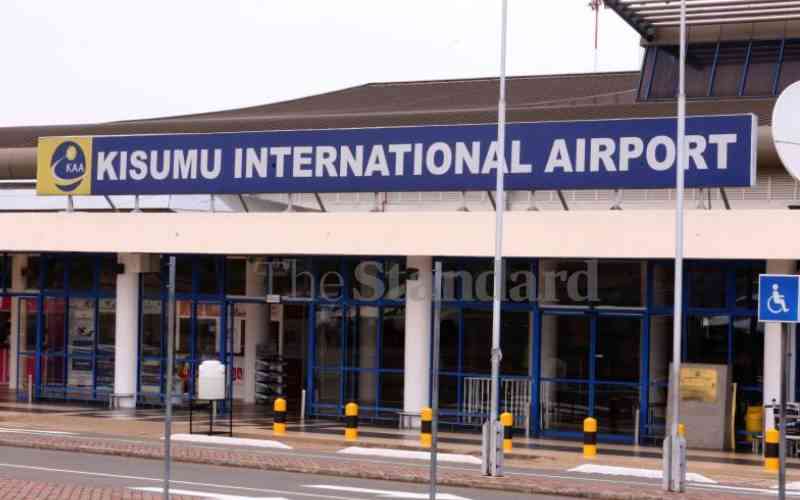Kenya’s international airports serve as vital gateways connecting the country to the rest of the world.
Strategically located in key cities, these airports play a crucial role in facilitating global trade, tourism, and travel.
With modern infrastructure, state-of-the-art facilities, and a focus on enhancing passenger experiences, Kenya’s international airports are hubs of connectivity and economic growth.
From the bustling Jomo Kenyatta International Airport in Nairobi to the coastal charm of Moi International Airport in Mombasa.
These airports reflect Kenya’s position as a regional aviation leader and an essential destination for travelers worldwide.

International Airports in Kenya
Kenya, known for its breathtaking landscapes, rich cultural heritage, and vibrant wildlife, is a major travel destination for tourists and business travelers alike.
At the heart of this connectivity lies its international airports, which act as vital gateways to the world.
These airports are not only essential for international trade and travel but also serve as key hubs for regional integration within East Africa.
This guide provides an in-depth look at Kenya’s international airports, their facilities, operations, and their role in the country’s economy and global connectivity.
Jomo Kenyatta International Airport (JKIA)
Overview
Located in Nairobi, Jomo Kenyatta International Airport (IATA: NBO) is the largest and busiest airport in Kenya.
Named after Kenya’s first president, the airport serves as the main gateway for international travelers visiting the country.
It is strategically positioned to serve as a transit hub for flights connecting Africa, Europe, Asia, and the Middle East.
Facilities
JKIA offers a wide range of facilities to cater to the needs of travelers, including:
- Passenger Terminals: The airport features modern terminals with designated areas for international and domestic flights.
- Lounge Services: Premium lounges like the Simba Lounge and Pride Lounge provide comfortable spaces for relaxation and work.
- Shopping and Dining: Duty-free shops, restaurants, and cafes offer travelers a variety of options.
- Transportation: Reliable transportation services, including taxis, ride-sharing, and car rentals, are readily available.
Significance
As Kenya’s primary international airport, JKIA handles millions of passengers annually. It is a hub for Kenya Airways and supports extensive cargo operations, making it a critical asset for the country’s economy.
Moi International Airport (Mombasa)
Overview
Situated in Mombasa, Moi International Airport (IATA: MBA) is the second-largest international airport in Kenya.
Located near the Indian Ocean coastline, it is a popular entry point for tourists heading to Kenya’s world-renowned beach resorts and historical sites.
Facilities
- Passenger Services: Moi International Airport features well-equipped terminals to handle both international and domestic flights.
- Tourism Support: The airport provides travel information desks and guides to assist tourists in exploring the coastal region.
- Cargo Handling: Its cargo facilities support the export of fresh produce and other goods.
Tourism Gateway
With its proximity to iconic attractions like Diani Beach and Fort Jesus, the airport plays a pivotal role in supporting Kenya’s thriving tourism industry.
Eldoret International Airport
Overview
Located in the Rift Valley, Eldoret International Airport (IATA: EDL) primarily supports agricultural exports and domestic travel.
It is also an alternative international airport for cargo and passenger services.
Facilities
- Specialized Cargo Services: The airport’s facilities are tailored to handle perishable goods, particularly horticultural products.
- Passenger Amenities: Basic amenities, including waiting lounges and parking facilities, are available for travelers.
Economic Contribution
Eldoret International Airport is instrumental in facilitating the export of Kenya’s agricultural products, contributing significantly to the country’s GDP.

Kisumu International Airport
Overview
Kisumu International Airport (IATA: KIS) serves the western region of Kenya.
Located near Lake Victoria, it connects the region to Nairobi and other international destinations.
Facilities
- Modern Terminals: The airport features upgraded terminals with increased passenger capacity.
- Cargo Capabilities: It supports cargo operations for goods such as fish and agricultural produce.
- Regional Connectivity: The airport enhances access to the western region, fostering economic growth and tourism.
Role in Development
As a regional hub, Kisumu International Airport plays a vital role in boosting trade and tourism in western Kenya.
Wilson Airport (Supplementary International Services)
Overview
While not classified as an international airport, Wilson Airport in Nairobi supports international chartered flights and private aviation.
It is a critical hub for domestic flights to Kenya’s national parks and remote areas.
Facilities and Services
- Private Charters: Wilson Airport serves as the primary base for private and chartered flights.
- Tourism Support: It provides connections to safari destinations such as Maasai Mara and Amboseli.
Key Features of Kenya’s International Airports
Security and Safety
Kenya’s international airports prioritize passenger safety with advanced security measures.
From state-of-the-art surveillance systems to stringent customs and immigration checks, these airports meet international safety standards.
Sustainability Initiatives
To support global environmental goals, Kenyan airports are embracing sustainability through initiatives like solar energy installations and advanced waste management systems.
For example, JKIA has implemented green energy projects to minimize its carbon footprint.
Technology Integration
Technology plays a significant role in enhancing efficiency at Kenyan airports.
Automated check-ins, biometric screening, and free Wi-Fi are some of the advancements improving the passenger experience.
Economic and Social Impact
Boosting Tourism
Kenya’s international airports serve as the entry points for millions of tourists each year.
From the wildlife safaris of the Maasai Mara to the pristine beaches of Diani, these airports enable seamless travel to Kenya’s top destinations.
Promoting Trade
The cargo capabilities of airports like JKIA and Eldoret International Airport support Kenya’s export-driven economy.
Horticultural products, tea, coffee, and other goods are efficiently transported to global markets.
Job Creation
Airports play a crucial role in employment, offering jobs in aviation, security, retail, and hospitality.
They also drive economic growth in nearby communities.
Challenges Facing Kenya’s International Airports
Despite their achievements, Kenyan airports face several challenges, including:
- Infrastructure Limitations: Overcrowding and aging facilities in some airports require upgrades to meet growing demand.
- Environmental Concerns: Expansion projects must balance development with environmental conservation.
- Competition: Regional competition from neighboring countries necessitates continuous improvement in services and infrastructure.
